
A series of interactive applets use scientific models to teach some basic concepts of matter, including states of matter and physical and chemical changes.
- Subject:
- Mathematics
- Science
- Material Type:
- Interactive
- Date Added:
- 12/01/2023

A series of interactive applets use scientific models to teach some basic concepts of matter, including states of matter and physical and chemical changes.

In this lesson, students will identify 2- and 3-dimensional shapes as well as create shape drawings and sculptures. Teacher materials are available.

Learn how to find the volume of a rectangular prism. [4:29]

Chemistry is often defined as the science of matter and how it changes. This pathway introduces the composition of matter and the physical and chemical changes it can undergo.
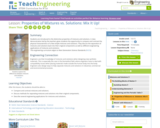
This lesson plan introduces the properties of mixtures and solutions. A class demonstration gives the students the opportunity to compare and contrast the physical characteristics of a few simple mixtures and solutions. Students discuss the separation of mixtures and solutions back into their original components as well as different engineering applications of mixtures and solutions.
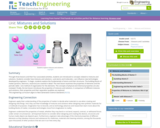
Through three lessons and their four associated activities, students are introduced to concepts related to mixtures and solutions. Students consider how mixtures and solutions and atoms and molecules can influence new technologies developed by engineers. To begin, students explore the fundamentals of atoms and their structures. The building blocks of matter (protons, electrons, neutrons) are covered in detail. The next lesson examines the properties of elements and the periodic table one method of organization for the elements. The concepts of physical and chemical properties are also reviewed. Finally, the last lesson introduces the properties of mixtures and solutions. A comparison of different mixtures and solutions, their properties and their separation qualities are explored.

Did you know that water has different states? Learn all about it with Boris in Copenhagen.

Set sail with Oleif, the Viking. Make his boat move by learning all about matter and particles.

This animation explains what happens to particles when an ice cube melts or water boils.

Educational site highlights the three states of matter as well as provides microscopic views.

Explore kitchen chemistry as Ruff Ruffman competes with his brother Scruff to make the tastiest egg dish in the shape of a duck. Ruff quickly learns that liquids behave much differently than solids when poured into a pan. Will Ruff be able to create an actual duck-shaped dish? [4 min, 4 sec]

Kids will have clarity in understanding the differences between solids, liquids, and gases. They Might Be Giants perform a catchy tune to help. [1:22]
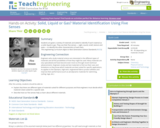
Students are given a variety of materials and asked to identify each material as a solid, liquid or gas. They use their five senses ŰÓ sight, sound, smell, texture and taste ŰÓ to identify the other characteristics of each item.

Students learn about solids, liquids, and gases in this interactive slide show. Animated cartoon characters explain concepts having to do with properties of matter. A self-checking quiz follows the lesson.

This video segment, adapted from ZOOM, explores how sound waves travel differently through solids than through air, in this case, a metal clothes hanger. [1:14]
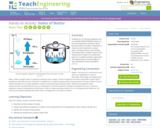
Students act as chemical engineers and use LEGO® MINDSTORMS® NXT robotics to record temperatures and learn about the three states of matter. Properties of matter can be measured in various ways, including volume, mass, density and temperature. Students measure the temperature of water in its solid state (ice) as it is melted and then evaporated.

Dr. Chris Muhlstein explains the challenge of studying materials that are too small to see with the naked eye. The technique some scientists use to observe individual atoms is similar to the technique of using touch to find out the size, shape, and location of objects in a small room. [1:05]
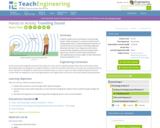
Students explore how sound waves move through liquids, solids and gases in a series of simple sound energy experiments. Understanding the properties of sound and how sound waves travel helps engineers determine the best room shape and construction materials when designing sound recording studios, classrooms, libraries, concert halls and theatres.

This article assembles free resources from the Water, Ice, and Snow issue of the Beyond Penguins and Polar Bears cyberzine into a unit outline based on the 5E learning cycle framework. Outlines are provided for Grades K-2 and 3-5.

Lists landfill issues such as leakage, water contamination, air emissions, and hazardous waste dumping. Gives extensive documentation site links.